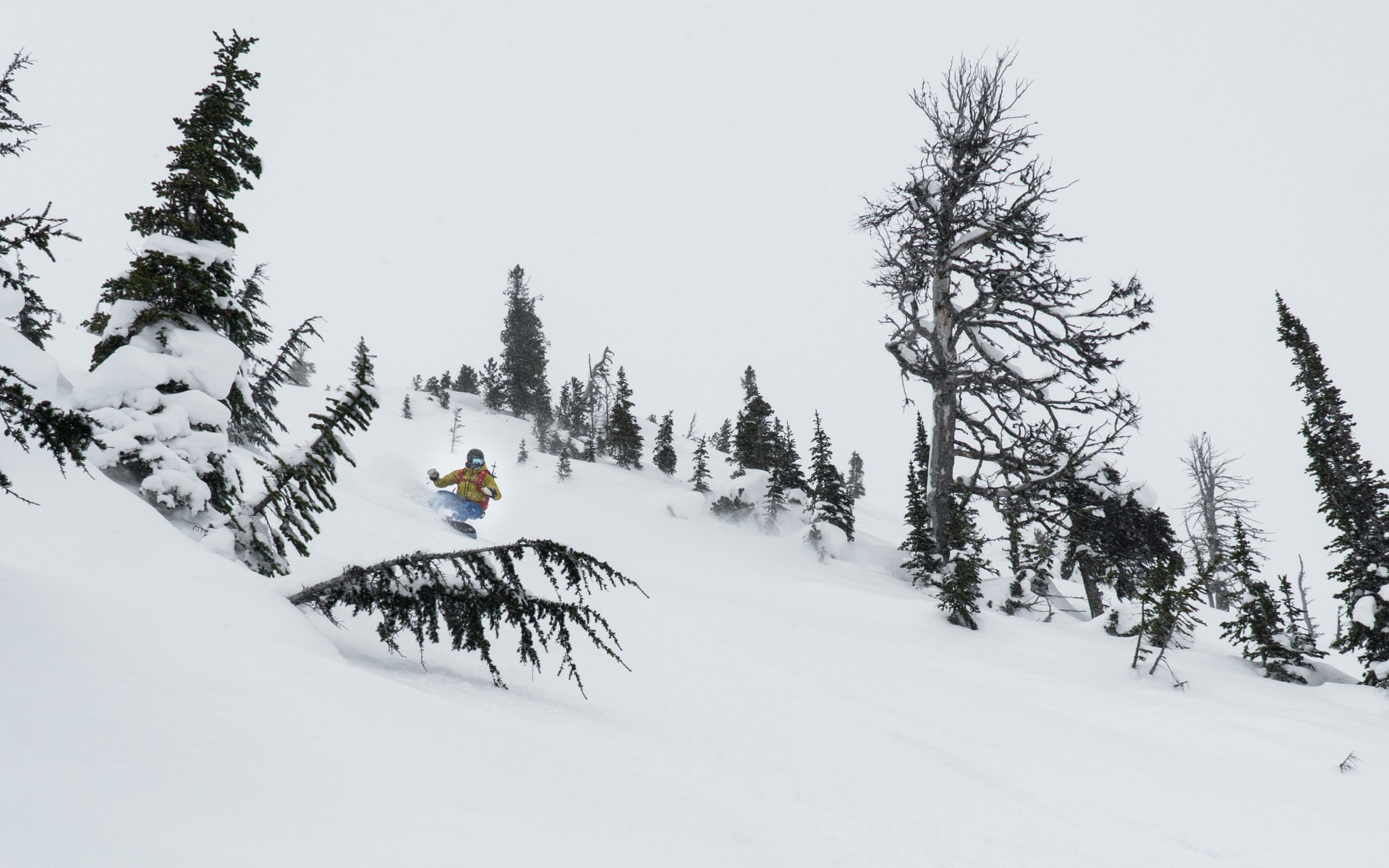The Ravens route is as good on the up as it is on the down. Starting at the Illecillewaet parking lot, the ascent through the same-name valley is relatively straightforward. After a winding uptrack through convoluted moraines, you gain the Illecillewaet Glacier, granting exquisite views of the Northern Selkirks across the highway. From there, it’s a beeline for the high point of the run at 2540m. As for the descent, it features 1000m of epic skiing through an alpine and treeline slope ranging from 30-35 deg. The tour finishes with a mellow slog down the Asulkan Trail back to the parking lot. Keep in mind, the slope is frequently battered by the prevailing SW winds which may degrade the upper slope’s snow condition and stability. Here’s a bit of warning: you’re exposing yourself to overhead hazards (from a rocky ridge), rolling convexities and numerous terrain traps below. Make sure the slope stability is adequate before attempting this route. All in all, the Ravens are a well-rounded option that takes you through two of Roger Pass’ main valleys.
This route is located within a Winter Restricted Area (WRA) governed by the Winter Permit System. Please check the WRA status before travelling through it.
Related: Forever Young Couloir: Skiing The Earth’s Crack

Report from January 10, 2022
We started our day pretty late (as always) due to some gnarly highway conditions. If it wasn’t for the black ice, the compact snow would get you. We gathered our gear and headed up the railroad grade to the abandoned Glacier House. Only the foundations are left intact, now buried under a meter of snow. A distance later, we veered east on the Great Glacier Trail, leading us to the convoluted moraines below Lookout Col (2150m) and Glacier Crest (2251m). The snow gauge indicated a snow height of 195cm at 1300m. Unreal for this time of the year!

We stopped for a water break right below the moraines. In the winter months, the snow-laden terrain becomes riddled with large pillow lines and narrow canyons. An ascent to the looker’s left is possible but risky given the terrain traps and serious overhead hazard from the Perley Rock NW slope. The better approach is to climb the center-right of the landscape along the more gentle moraines, allowing a rather direct linkup with the toe of the Illecillewaet Glacier.

And so, we ascended the complex terrain as planned following an almost perfect uptrack, obviously forged by a ski guide – all the corners were dug out to make kick-turns easier. Eventually, the imposing glacier appeared over the moraines.
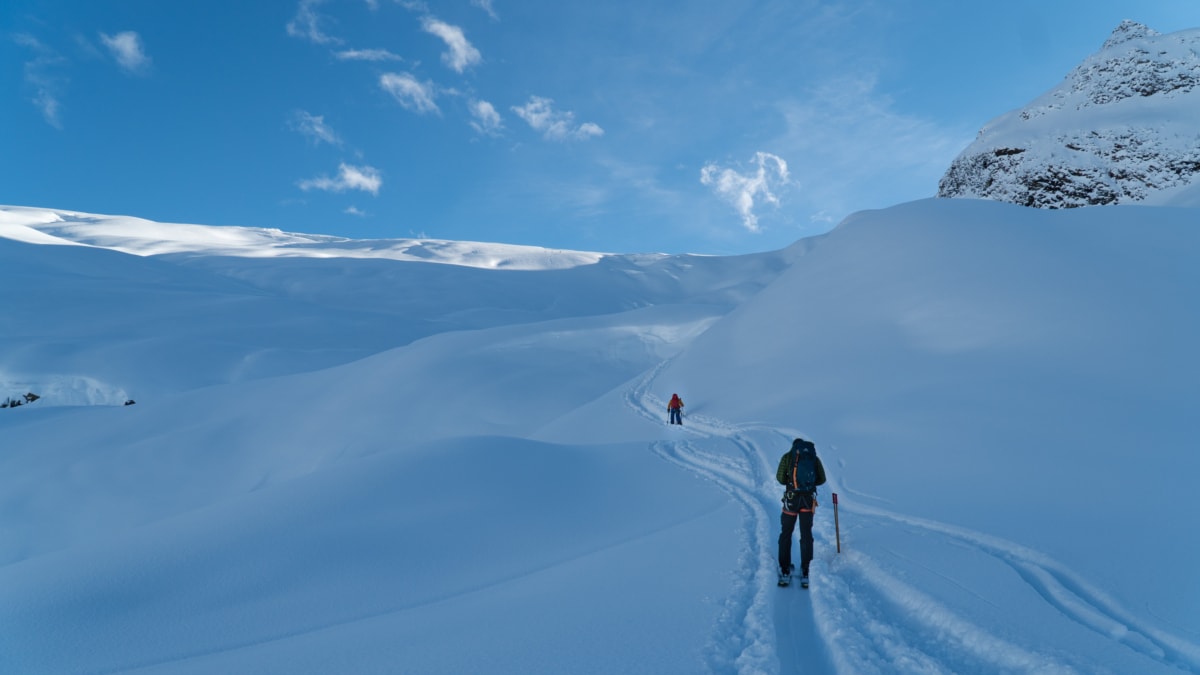
At 1980m, we stopped for a snack and roped up for the upcoming glacier travel. The first third of the ascent up the glaciated terrain is riddled with large crevasses, now bridged over by our thick snowpack. Most opt-out of roping up that portion. After three close calls in 2021, I don’t take the chance anymore. After all, the process takes less than 5 minutes.

As soon as we crossed the sketchy section bordered by humungous crevasses on both sides, we ditched the rope to speed up our travel. While a storm was forecasted for 4 PM, the rolling cloud cover indicated an earlier arrival. This was a sad moment. After hours spent in the shadow of the mountains, we had lost our source of Vitamin D. Damn! Doing the Ravens with low visibility would be “sub-optimal” to say the least. Fortunately, there was a brief break in the clouds, but only for a moment.
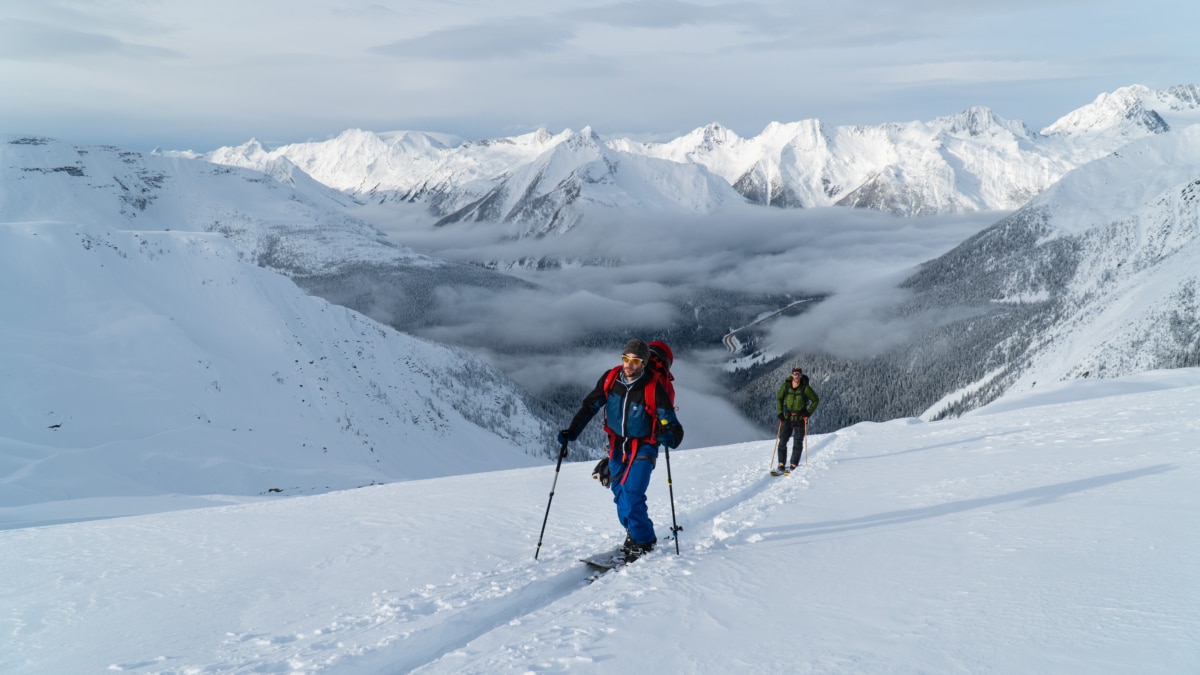
When you think you’re almost at the top, you’re definitely not – the Illecillewaet Neve (icefield) goes on forever. At least, the views from this perch are absolutely stunning. After another 3km of easy touring on the gentle, wind-swept grade, we arrived at the high point of our traverse (2540m), nestled between a glaciated ramp and a rocky ridge. In a classic Rogers Pass fashion, the storm moved right above us, with raging winds and snow falling sideways. All of a sudden, the light became as flat as it gets. We were moving inside a ping-pong ball.

After we’d found shelter behind a large wind lip, we quickly sorted our gear for the descent. I led the way heading generally NW across the rocky ridge, feeling the snow at every turn. The trick here is to stick to the ridge until the west slope of the Ravens fans out. We purposefully avoided the N-NW slope descending into the Lookout Bowl or any of the NW gullies. At this time, those would be heavily wind-loaded and offer no definition posing a serious avalanche and navigational hazard. As the ridge veered to the west, we stayed away from the northern edge to avoid large cornices.

After difficult skiing through the rocky, icy, wind-swept ridge, the west slope finally opened up below. It was visibly cross-loaded by the prevailing SW winds. With limited visibility and questionable snow stability, we conservatively choose a path down sparse trees, anchoring down the snowpack. The upper half of the run offered wind-packed snow, frighteningly cracking right at our skis. The shooting cracks indicated the presence of wind slabs, a serious avalanche hazard that must be managed properly. I carved my way through the sparse trees, skiing a long diagonal to dodge any potential slides. We stayed away from a big funnel to the skier’s left, an obvious terrain trap.
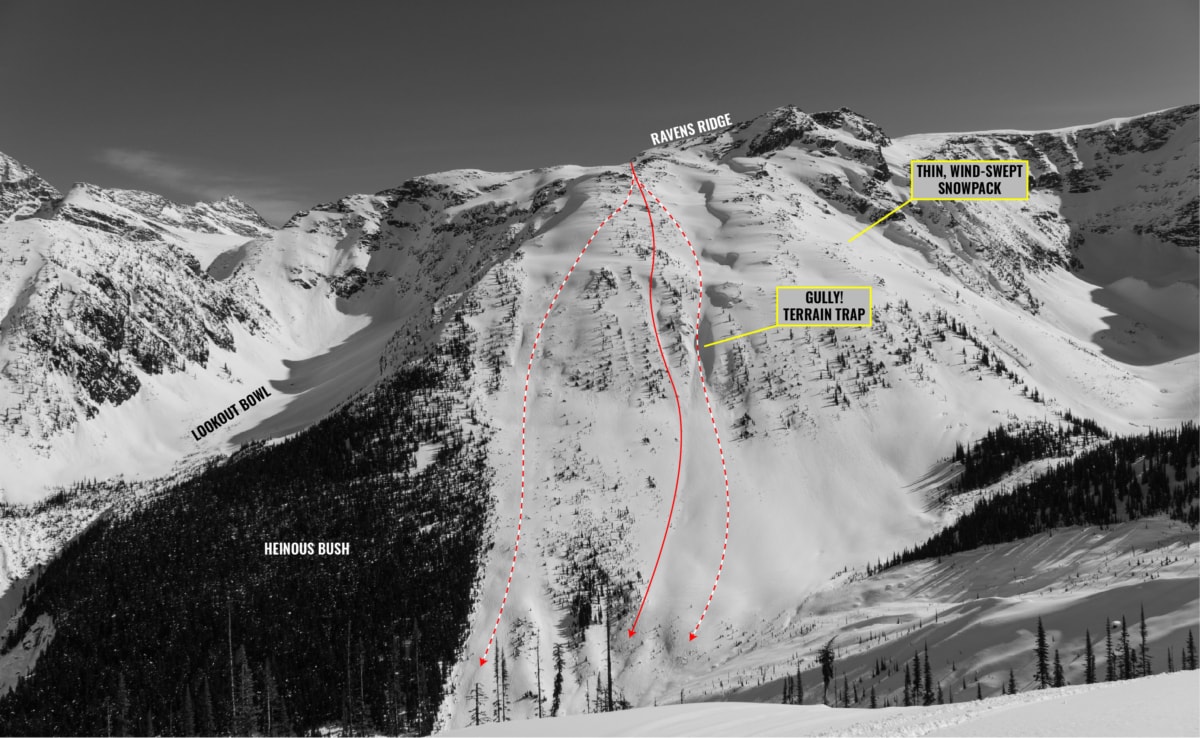
After a few strategic ski-cuts to test the lower, powdery half of the slope, we determined it was safe to open up the throttle. We skied down some ridiculously deep powder, more than I’ve seen in years. It was incredibly good.
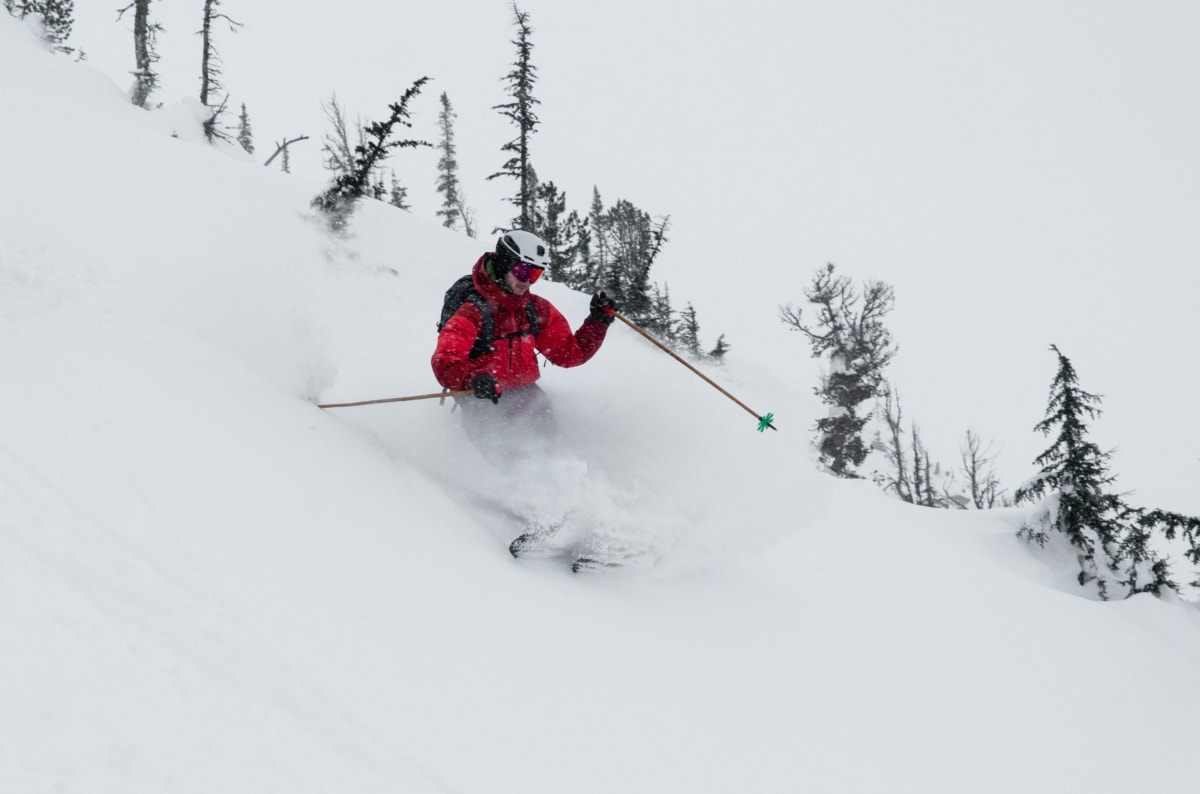
We finished our run on the Asulkan Trail, stoked to have skied another classic line. Looking back, we realized the slope extended much further north than we thought. The looker’s left option would offer the most direct, continuous descent from the ridge. After discussing future plans, we slogged back to the parking lot, pushing and side-stepping for ages. I vowed to come back to ski the other options when the upper slope is in better condition.

Route Info
For more beta on my adventures, check out the Route Map. This online map interface is a repository of Beyond Our Peak’s published ski touring and mountaineering routes. It’s the best way to browse through trip reports. Give it a shot!
